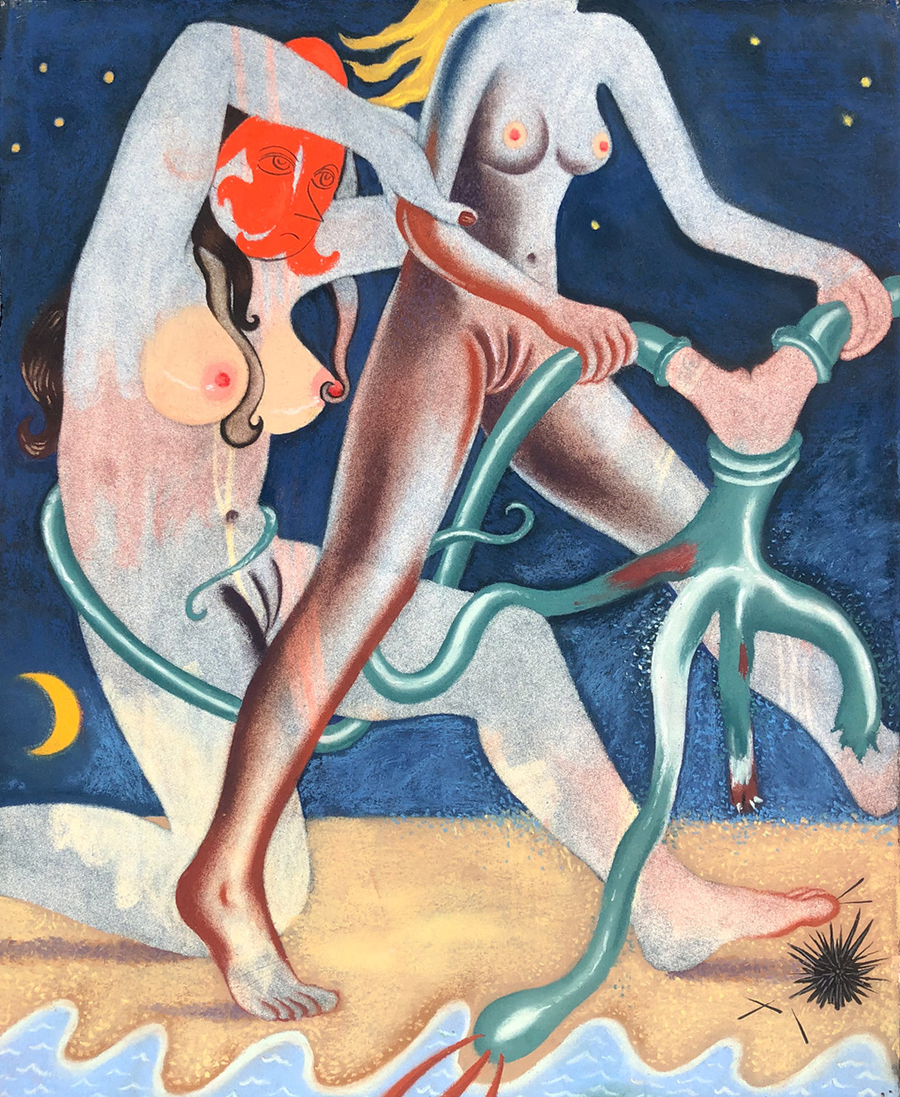A Guide to Zurich Art Weekend
Ahead of Zurich Art Weekend, the pick of the shows to see in the city
Ahead of Zurich Art Weekend, the pick of the shows to see in the city


‘Il Grande Female’
BolteLang
8 June – 6 July 2019
Over the past ten years, BolteLang have consistently offered a varied and stimulating exhibition programme – including collaborations with Claudia Comte, Haris Epaminonda, David Ostrowski and Pamela Rosenkranz, to name but a few – as well as regularly hosting guest curators and other organizations in Zurich. Sadly, however, the gallery’s Zurich Art Weekend show will be its last: ‘Il Grande Female’ (The Great Female) is a group exhibition highlighting some of the brilliant women artists – as well as a number of talented men – that have characterized Anna Bolte and Chaja Lang’s programming.

‘The Self, The Work, The World’
Fabian Lang
8 June – 31 July 2019
All is not doom and gloom, however, with new galleries having decided to set up shop in Zurich. Fabian Lang, who was long on staff at Victoria Miro in London, opens his gallery close to Kunsthaus Zurich with a show of new and recent figurative works by both young and established women artists. It promises to be an exhibition dense with fantastical imagery conjuring complex, vibrant, sexual beings. This will be the first opportunity for Swiss audiences to see Mernet Larsen’s perspectival experiments while Mira Schor’s diagrammatic The Self, The Work, The World (2012), which supplies the exhibition title, provides a stark yet effective contrast to Wangechi Mutu’s fierce sculptural reliefs combining natural materials and stiletto heels.

Stephen Willats
Migros Museum für Gegenwartskunst
25 May – 18 August 2019
The Migros Museum für Gegenwartskunst is staging an expansive retrospective exhibition of Stephen Willats’s work, ranging from the early 1960s to date. From the get-go, Willats questioned how art might become socially engaged – his diagrams tease out dynamic social systems and propose opportunities to change and disrupt them – while other early works resonate with optimism about the benefits of computer-operated systems. Rarely engaging with institutional critique, Willats rolled up his sleeves to make art in and with different communities, including many collaborations with urban housing projects – works that have regained urgency in the wake of the 2017 Grenfell Tower tragedy in London. Willats’s lines of enquiry evidence the changing attitudes to issues such as transport and resources from the 1960s to the present day, as well as identifying constant underlying concerns such as security and family well-being.
Starkly contrasting to Willats’s sober, documentary approach is Kirstine Roepstorff’s immersive, intoxicating, multi-sensory intervention at Haus Konstruktiv, while other institutional shows worth noting include Ida Ekblad’s show at Kunsthalle Zurich and Sophie Calle’s recent works on view at Fotomuseum Winterthur – a short train journey from Zurich.

Max Bill
Hauser & Wirth
9 June – 14 September 2019
As Hauser & Wirth continue to morph into a commercial museum, the most recent addition to their burgeoning artist roster is Max Bill – such a pillar of Zurich’s concrete art movement that locals pass his public artwork on the city’s busy Bahnhofstrasse, Pavillon-Skulptur (1983), almost without noticing. Coinciding with the Bauhaus anniversary year, this first show of Bill’s work explores his time as a student at the school in the early days of its second iteration at Dessau. This experience would inform the design school Bill later co-founded in Ulm, the Hochschule für Gestaltung, which existed, in a building he designed, from 1953 to 1968. Illustrating the interweaving of artistic inspiration and art and design education throughout Europe from the 1920s onwards, the show concentrates on Bill’s artistic evolution but also includes works by Josef Albers, Lyonel Feininger, Wassily Kandinsky, Paul Klee, László Moholy-Nagy, Kurt Schwitters, Oskar Schlemmer, Sophie Taeuber-Arp and Georges Vantongerloo.
Across town, Hauser & Wirth’s publications arm is opening its inaugural bookshop on Rämistrasse. Nearby, Mai 36 Galerie is collaborating this June with Tokyo-based Taka Ishii Gallery on a show of historic Japanese photography.

Tony Feher
Plymouth Rock
7 June – 22 July 2019
Tony Feher’s show at Plymouth Rock is a welcome tonic. Feher lived and worked in New York from the 1980s till his death of AIDS-related illness in 2016 and is surprisingly little-known in Europe. This spare show comprises just four pieces, each made from cheap, commonplace materials, elevated through their graceful arrangements and carefully-chosen titles. Take (Pollywog), (2007), a tangle of blue and white plastic strapping tied together and held aloft like a chandelier. The unfamiliar name means tadpole but is also slang for a sailor who has not yet crossed the equator, transforming what is usually a frustrating, abrasive material into a pregnant cloud of possibilities, touching on ideas of fresh-faced inexperience and the figure of the sailor in gay iconography.
Other artist-run and smaller spaces worth checking out in the Oerlikon area are Long Tang – showing Sarah Chow, Thomas Jeppe, Ceylan Öztrük and Shaun Motsi – and Hamlet, which opens an exhibition of works by Keren Cytter and John Roebas.

Bruno Bischofberger
5 – 15 June 2019
There’s a rare, and brief, opportunity to visit Galerie Bruno Bischofberger for ten days of June. Since Bischofberger – who had a first right of refusal contract for nearly 20 years with Andy Warhol, and reputedly introduced Warhol to Jean-Michel Basquiat – moved to huge, purpose-built exhibition and storage premises outside the city on Zurich’s so-called ‘gold coast’, its hushed and well-guarded galleries have generally been closed to the public. Female artists scarcely feature on the programme at Bischofberger; rather, it’s an extraordinary locus of big-name, blue-chip commercial heavyweights including – in addition to Basquiat and Warhol – Francesco Clemente, George Condo and Julian Schnabel.
Zurich Art Weekend 2019 takes places at various venues in town from 7 – 9 June 2019.
Main image: Patrick Hari, Hilux on the wall, 2018, model, salt, epoxy resin, wood, 16 × 31 × 14 cm. Courtesy: the artist and BolteLang, Zurich




















